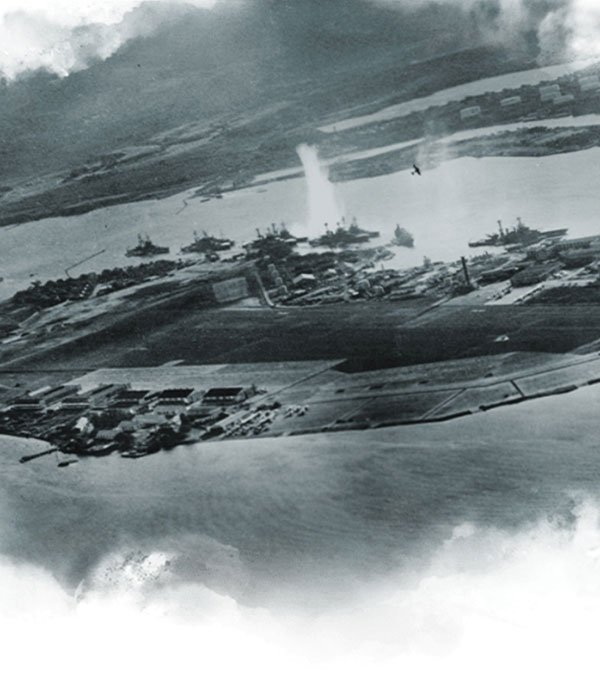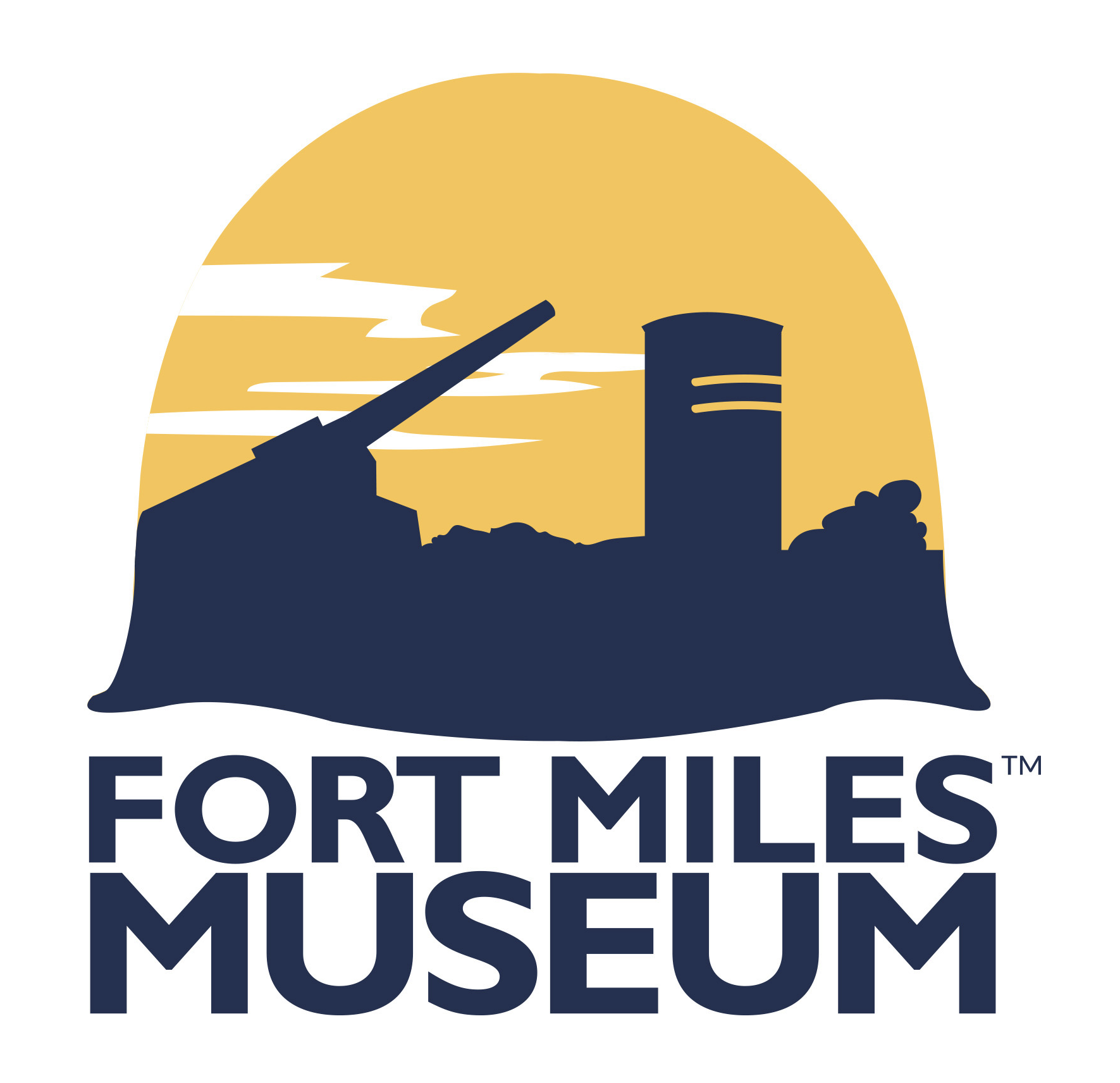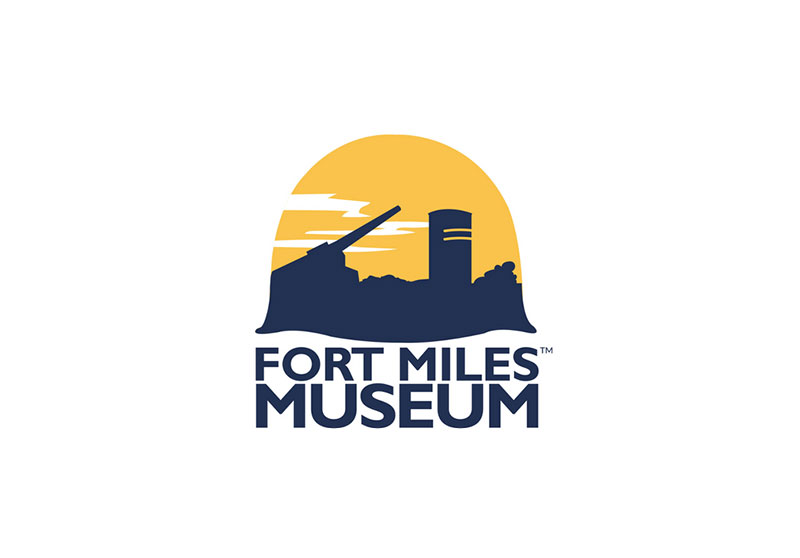USS Arizona
Forever remembered as “a date which will live in infamy,” December 7, 1941 brought the attack on Pearl Harbor, which altered the course of human history. Visit the USS Arizona exhibit to gain a better understanding of that world-changing day.
Oil Still Bleeds Exhibit
Oil Still Bleeds is a tribute to Delaware’s forgotten servicemen who were at Pearl Harbor on December 7, 1941. The exhibit is designed around a 650-pound relic from the battleship USS Arizona, which was sunk during the attack and still bleeds oil to the surface.
The exhibit features a large interactive touch screen to educate visitors about the Pearl Harbor attack and the sinking of the Arizona. This exhibit and the 16-inch USS Missouri artillery barrel, which sits adjacent to the Musuem’s entrance, combine to present the bookends of U.S. involvement in WWII. Oil Still Bleeds represents the beginning of the United States’ entry into the war; the surrender ceremony ending the war took place under the 16-inch barrel. This is one of the few sites where visitors can visualize both the beginning and end of World War II.
1941 Attack Ignites Ship’s Ammunition
The Japanese attack began about 7:55 a.m. local time, on Sunday, December 7. About 8:15 a.m., a bomb dropped from a Japanese plane struck the Arizona’s forward deck. lt penetrated into the ship, detonated and set off the ship’s ammunition stores. The resulting explosion was cataclysmic.
In an instant, 1,177 sailors and Marines were killed or trapped in the sinking ship. The Arizona settled keel-down in about 40 feet of water, its main deck awash. The explosion demolished the ship’s forward section, with the two forward turrets and part of the superstructure collapsing into the hull. Fires burned aboard the Arizona for three days before dying.
After extensive study by the Navy following the attack, it was determined that the ship was too badly damaged to repair. The Arizona was struck from the Naval Register on December 1, 1942. Some of her main armament was salvaged and repurposed on another battleship and as shore batteries in Hawaii. The Navy cut away most of the wreckage above the water line, leaving the sunken hull containing the bodies of 900 or more of her crew on the bottom of Pearl Harbor. The wreckage was taken to a remote location on Pearl Harbor Naval Base, where much of it remains today. By October 1943, most of the structure above the waterline had disappeared.
Arizona Monument
The idea of building a monument to the Arizona and its dead dates to the post-war years.
In 1951, on orders of Adm. Arthur Radford, commander in chief of the Pacific Fleet, the Navy built a wooden platform on a small piece of the wreckage above the waterline. A flagpole was installed and the custom of raising and lowering the flag over the sunken hull began.
Seven years later, President Dwight D. Eisenhower approved construction of a memorial at the wreck site. Funds were raised, including proceeds from a Pearl Harbor concert by Elvis Presley.
The USS Arizona Memorial opened in 1962. The platform authorized by Admiral Radford was removed to make way for the construction, along with wreckage upon which it was mounted.
FMHA was told its relic was said to have come from that site.
Relics Program Commands Respect
The Navy received many requests for pieces of the cut-away wreckage for display in museums or use at memorials. The Navy was unable to grant the requests because no legal method existed to approve them.
In 1995, Congress authorized the Navy to donate portions of the wreckage to approved organizations, subject to strict conditions, including that the donation and transfer must be at no cost to the government; the artifact may not be sold, traded, or used for profit; and it must be treated with the respect that a fragment of a war grave should be shown.
In October 2018, the FMHA board voted to petition the Navy for a fragment of the Arizona wreckage to be displayed at Fort Miles Museum. FMHA asked for the largest available piece, planning to place the relic near a large artifact — the 16-inch gun barrel from the Missouri on display outside the Museum’s main entrance. After nearly two years, led by FMHA board member Cliff Geisler, the 650-pound, 11-foot-long relic arrived at Fort Miles.
USS Arizona
Forever remembered as “a date which will live in infamy,” December 7, 1941 brought the attack on Pearl Harbor, which altered the course of human history. Visit the USS Arizona exhibit to gain a better understanding of that world-changing day.
Oil Still Bleeds Exhibit
Oil Still Bleeds is a tribute to Delaware’s forgotten servicemen who were at Pearl Harbor on December 7, 1941. The exhibit is designed around a 650-pound relic from the battleship USS Arizona, which was sunk during the attack and still bleeds oil to the surface.
The exhibit features a large interactive touch screen to educate visitors about the Pearl Harbor attack and the sinking of the Arizona. This exhibit and the 16-inch USS Missouri artillery barrel, which sits adjacent to the Musuem’s entrance, combine to present the bookends of U.S. involvement in WWII. Oil Still Bleeds represents the beginning of the United States’ entry into the war; the surrender ceremony ending the war took place under the 16-inch barrel. This is one of the few sites where visitors can visualize both the beginning and end of World War II.

1941 attack ignites ship’s ammunition
The Japanese attack began about 7:55 a.m. local time, on Sunday, December 7. About 8:15 a.m., a bomb dropped from a Japanese plane struck the Arizona’s forward deck. lt penetrated into the ship, detonated and set off the ship’s ammunition stores. The resulting explosion was cataclysmic.
In an instant, 1,177 sailors and Marines were killed or trapped in the sinking ship. The Arizona settled keel-down in about 40 feet of water, its main deck awash. The explosion demolished the ship’s forward section, with the two forward turrets and part of the superstructure collapsing into the hull. Fires burned aboard the Arizona for three days before dying.
After extensive study by the Navy following the attack, it was determined that the ship was too badly damaged to repair. The Arizona was struck from the Naval Register on December 1, 1942. Some of her main armament was salvaged and repurposed on another battleship and as shore batteries in Hawaii. The Navy cut away most of the wreckage above the water line, leaving the sunken hull containing the bodies of 900 or more of her crew on the bottom of Pearl Harbor. The wreckage was taken to a remote location on Pearl Harbor Naval Base, where much of it remains today. By October 1943, most of the structure above the waterline had disappeared.

Arizona monument
The idea of building a monument to the Arizona and its dead dates to the post-war years.
In 1951, on orders of Adm. Arthur Radford, commander in chief of the Pacific Fleet, the Navy built a wooden platform on a small piece of the wreckage above the waterline. A flagpole was installed and the custom of raising and lowering the flag over the sunken hull began.
Seven years later, President Dwight D. Eisenhower approved construction of a memorial at the wreck site. Funds were raised, including proceeds from a Pearl Harbor concert by Elvis Presley.
The USS Arizona Memorial opened in 1962. The platform authorized by Admiral Radford was removed to make way for the construction, along with wreckage upon which it was mounted.
FMHA was told its relic was said to have come from that site.
Relics program commands respect
The Navy received many requests for pieces of the cut-away wreckage for display in museums or use at memorials. The Navy was unable to grant the requests because no legal method existed to approve them.
In 1995, Congress authorized the Navy to donate portions of the wreckage to approved organizations, subject to strict conditions, including that the donation and transfer must be at no cost to the government; the artifact may not be sold, traded, or used for profit; and it must be treated with the respect that a fragment of a war grave should be shown.
In October 2018, the FMHA board voted to petition the Navy for a fragment of the Arizona wreckage to be displayed at Fort Miles Museum. FMHA asked for the largest available piece, planning to place the relic near a large artifact — the 16-inch gun barrel from the Missouri on display outside the Museum’s main entrance. After nearly two years, led by FMHA board member Cliff Geisler, the 650-pound, 11-foot-long relic arrived at Fort Miles.
USS Missouri
Among the other artifacts at Fort Miles Museum is a 16-inch gun barrel taken from the USS Missouri, the last battleship built for the U.S. Navy. After an illustrious service life, the Missouri was decommissioned and, in 1998, found its “forever home” as a museum ship, moored at Pearl Harbor a few hundred yards from the wreck and memorial of the USS Arizona. Perhaps the Missouri’s most significant claim to fame is that Japan surrendered on its deck in September 1945, ending World War II. The historical symmetry is unmistakable — and deliberate.
Preserving History
In 2011, after a thorough search for a 16-inch gun barrel similar to those at Fort Miles, FMHA President Gary Wray located multiple barrels in rough storage at two naval installations. The barrels, taken from battleships, had lain outside for years after they were removed from those vessels. They were within days of being cut up and scrapped. When the USS Missouri barrel arrived at Fort Miles, it was marked with paint showing where the cuts were to be made.
Wray established through extensive research that several of the barrels were in place aboard the Missouri the day Japan surrendered. One of the barrels, the middle gun of Turret 1, is enshrined outside the museum. It may be said that WWII ended literally in the shadow of the Fort Miles Museum barrel.


